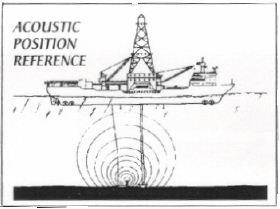نمایش نتیجه 1 تا 10 از 602 نتیجه یافت شده برای lay:
n: see drilling and delay rental clause.
n: a naturally occurring clay that, after activation, usually with acid, is used mainly as a decolourant or refining agent, and sometimes as a desulphuriser, coagulant, or catalyst.
n: a record of the measurement of porosity, done by comparing depth to the time it takes for a sonic impulse to travel through a given length of formation. The rate of travel of the sound wave through a rock depends on the composition of the formation and the fluids it contains. Because the type of formation can be ascertained by other logs, and because sonic transit time varies with relative amounts of rock and fluid, porosity can usually be determined in this way.
n: A display of traveltime of acoustic waves versus depth in a well. The term is commonly used as a synonym for a sonic log. Some acoustic logs display velocity.
نمودار صوتی
n: a system consisting of a beacon positioned on the seafloor to transmit an acoustic signal, a set of three or four hydrophones mounted on the hull of a floating offshore drilling vessel to receive the signal, and a position display unit to track the relative positions of the rig and the drill site. Monitoring of the display unit aids in accurate positioning of the rig over the site.
n pl: the characteristic patterns for various degrees of cement bonding between the casing and the borehole that appear on an oscilloscope display when a sonic cement bond log is made.
the raw, real time recording of the data, later formed into a digital or playback log.
A corrosion state where a metal is corroding without control by a reaction product (or corrosion product layer).
n: the adhesion of a thin film of a gas or liquid to the surface of a solid. Liquid hydrocarbons are recovered from natural gas by passing the gas through activated charcoal, silica gel, or other solids, which extract the heavier hydrocarbons. Steam treatment of the solid removes the adsorbed hydrocarbons, which are then collected and re-condensed. The adsorption process is also used to remove water vapour from air or natural gas. Compare absorption.
n: A surface phenomenon exhibited by a solid (adsorbent) to hold or concentrate gases, liquids or dissolved substances(adsorptive) upon its surface, due to adhesion.
the attraction and holding of a layer of a chemical on the wall of a formation. Usually held by ionic charge or wetting preference.
n: The certain temperature in which mud and slurry lay in order to check out the variable relations between time and performance of mud and slurry.
n: 1. a hand tool that is powered pneumatically. 2. a chamber filled with compressed air, often used offshore in seismic exploration. As the gun is trailed behind a boat, air is released, making a low frequency popping noise, which penetrates the subsurface rock layers and is reflected by the layers. Sensitive hydrophones receive the reflections and transmit them to recording equipment on the boat.
seismic source for ocean seismic work.
ضربه زن صوتی





